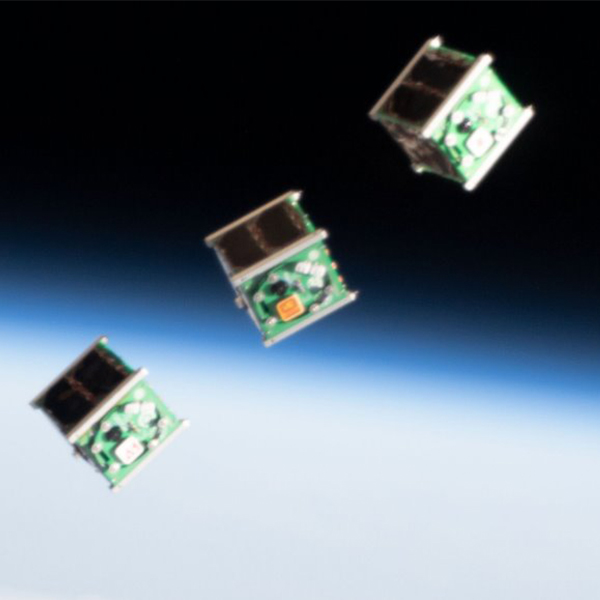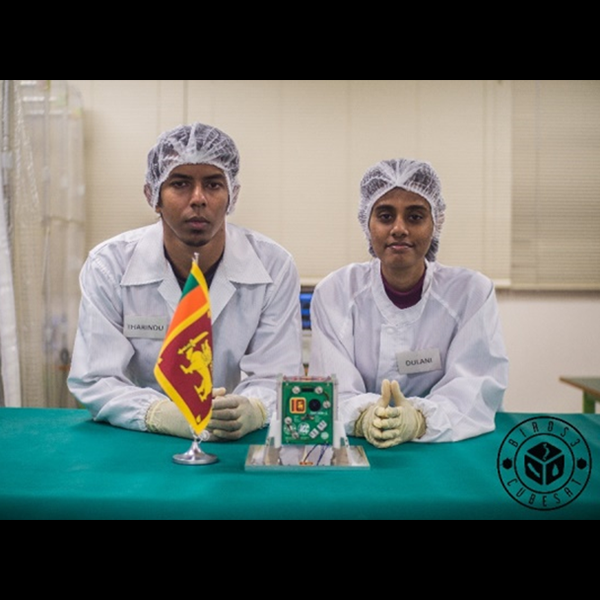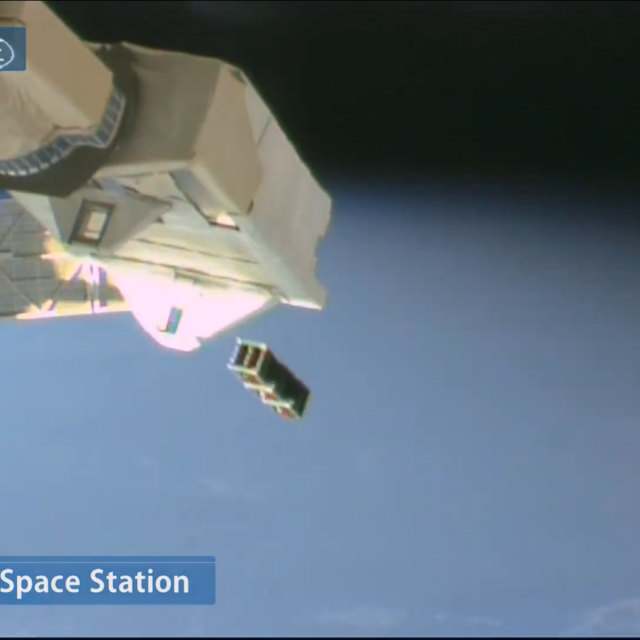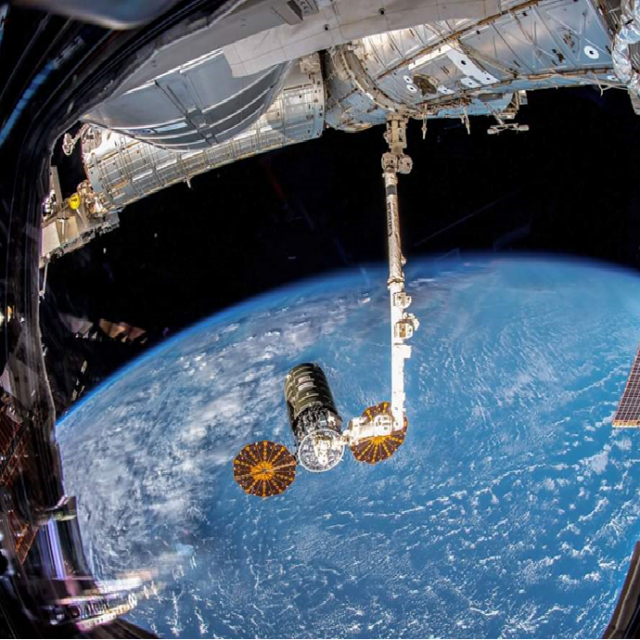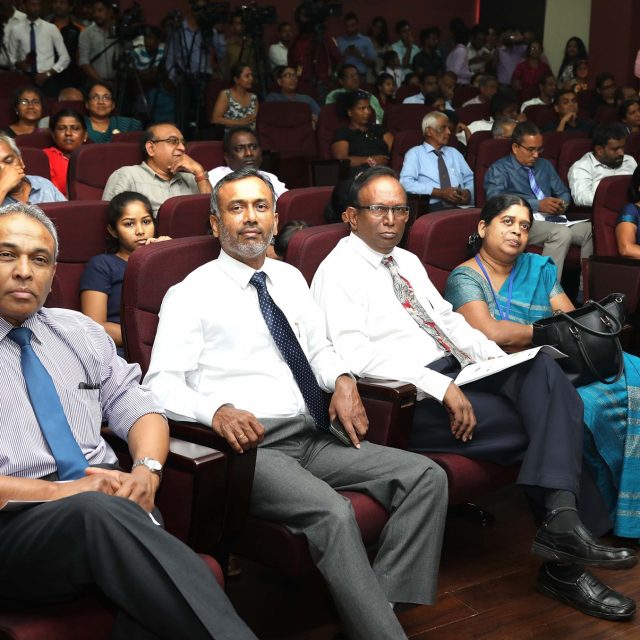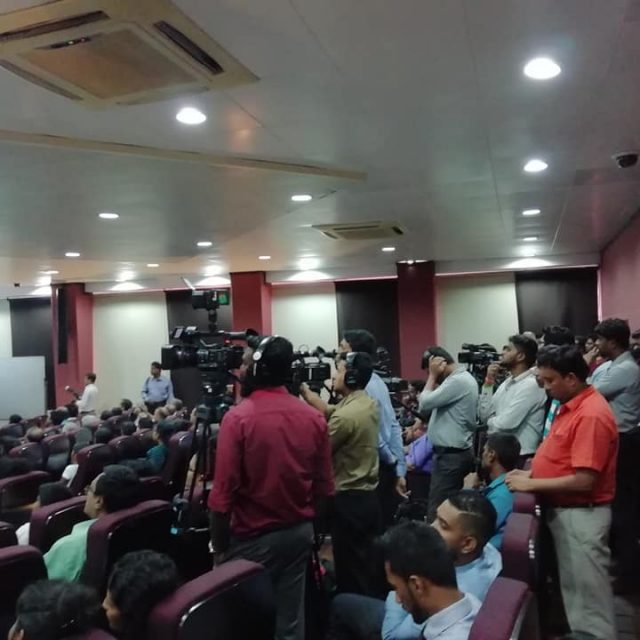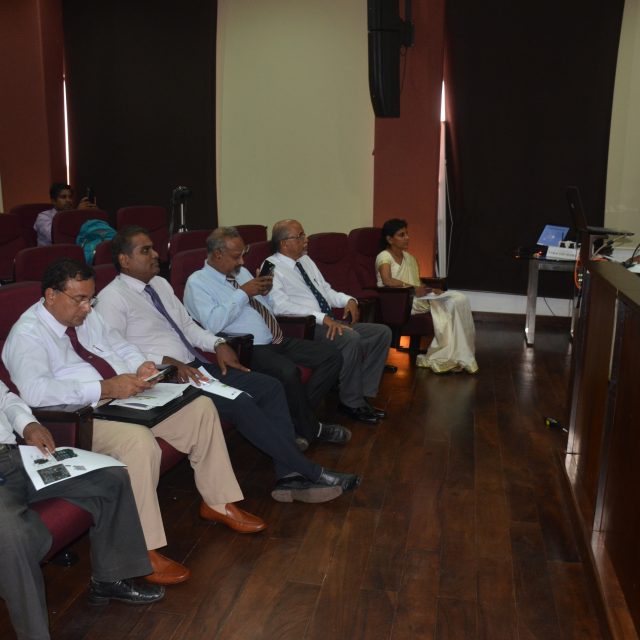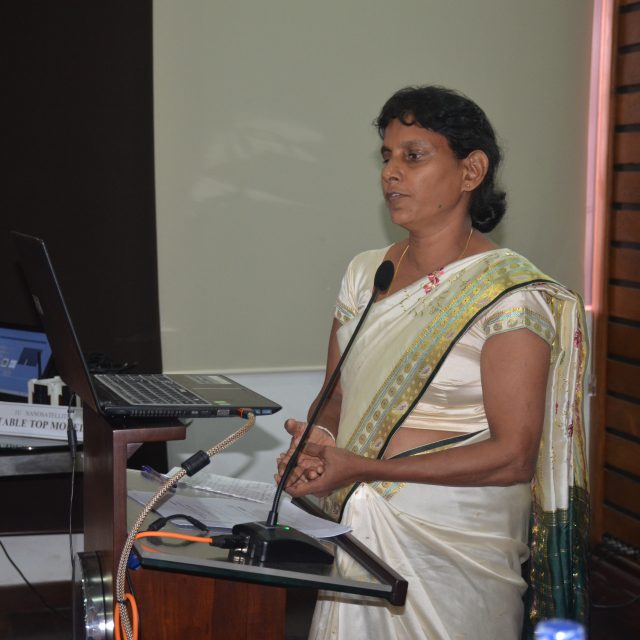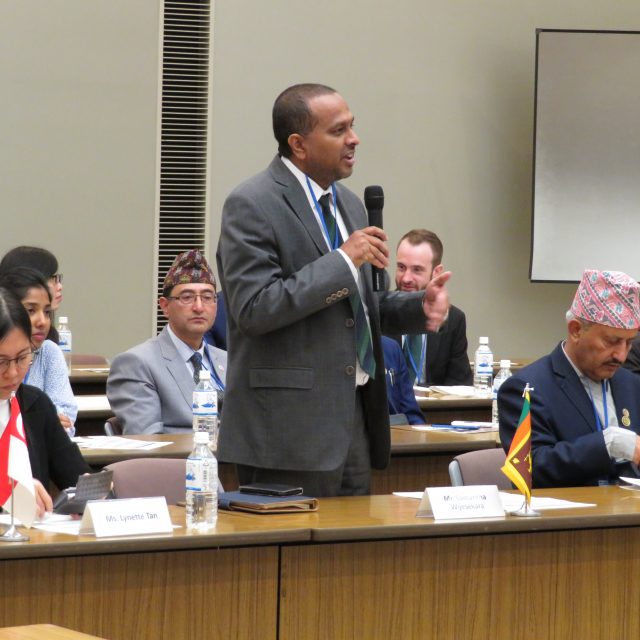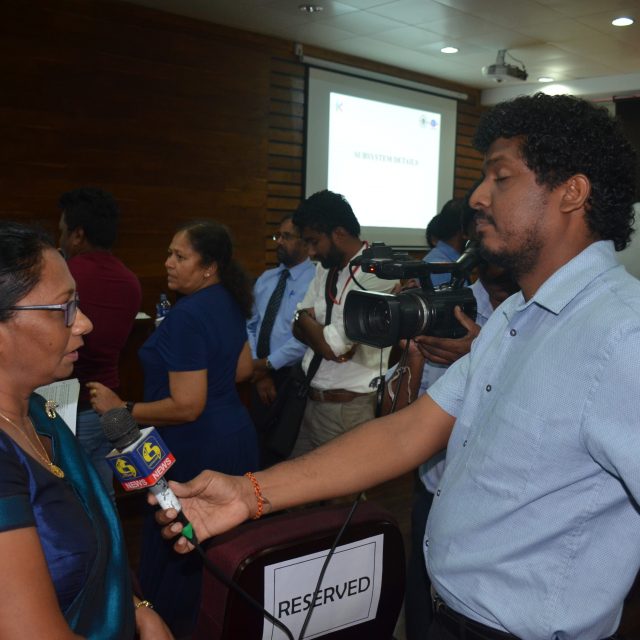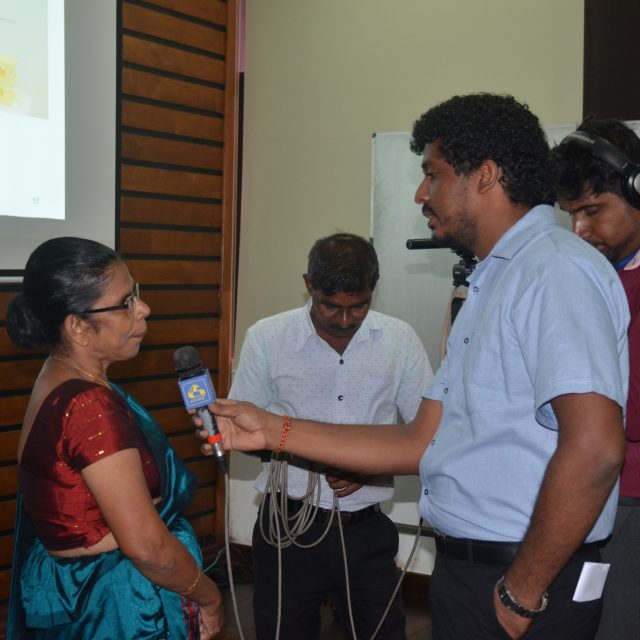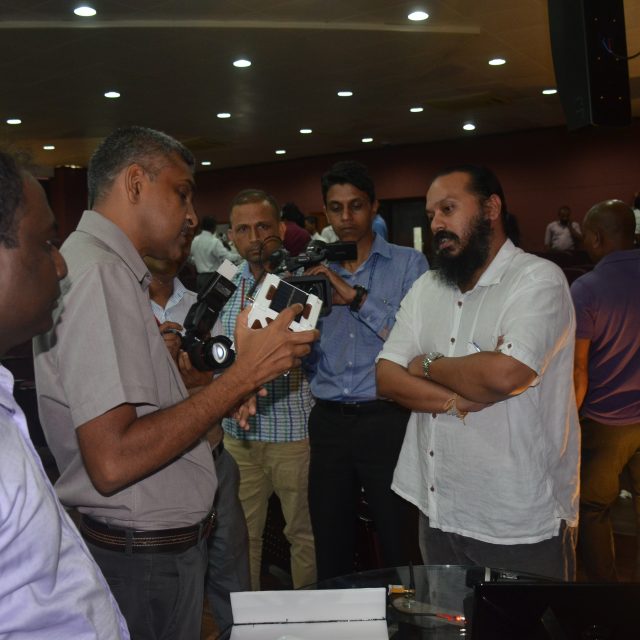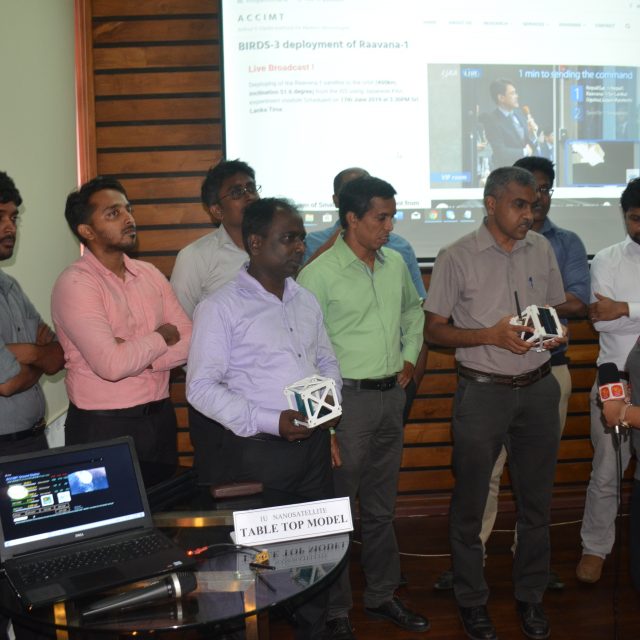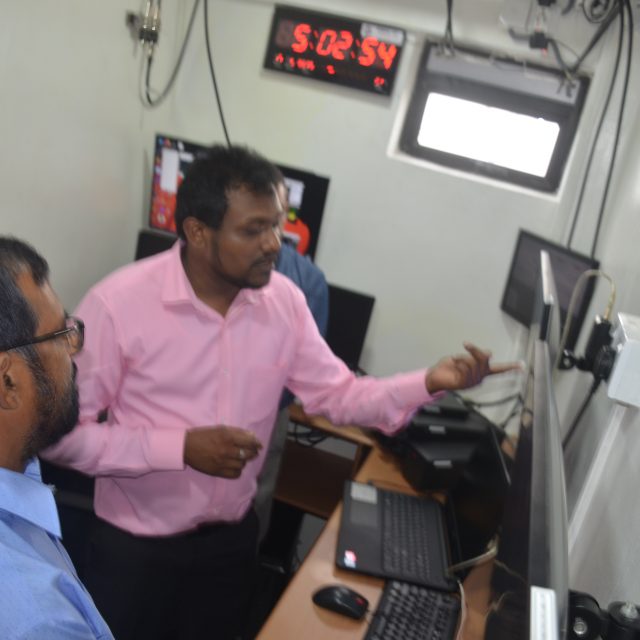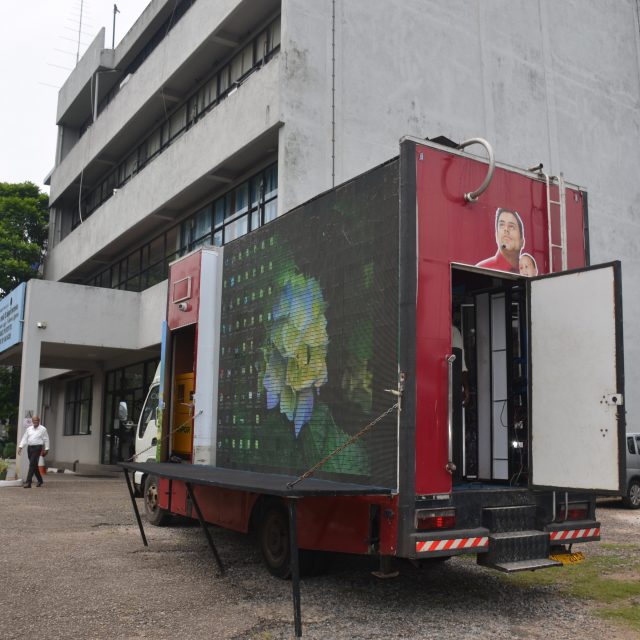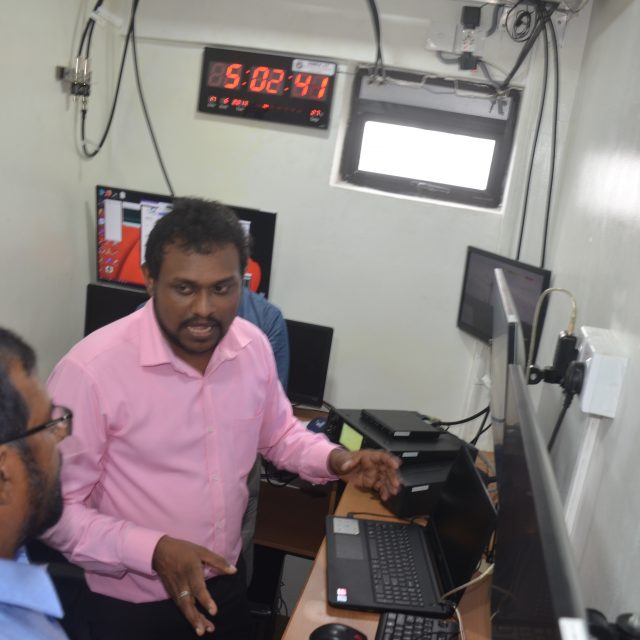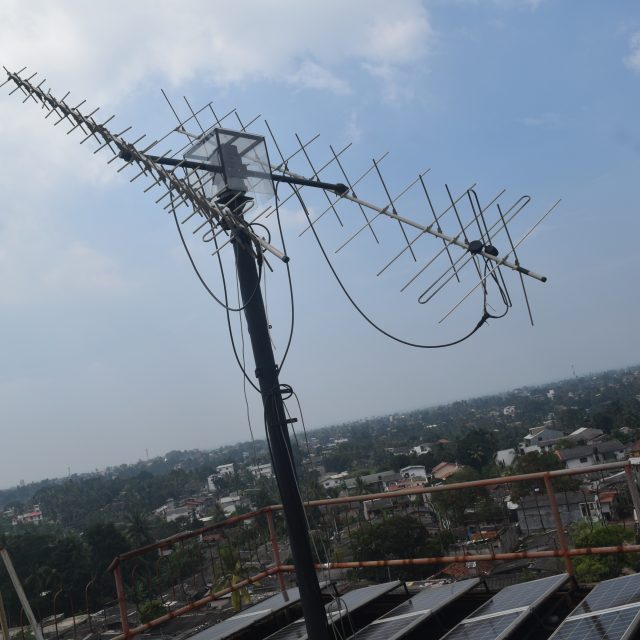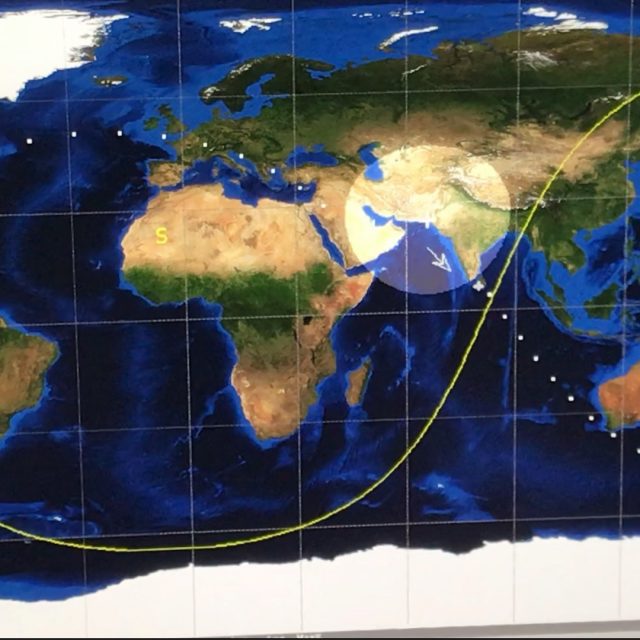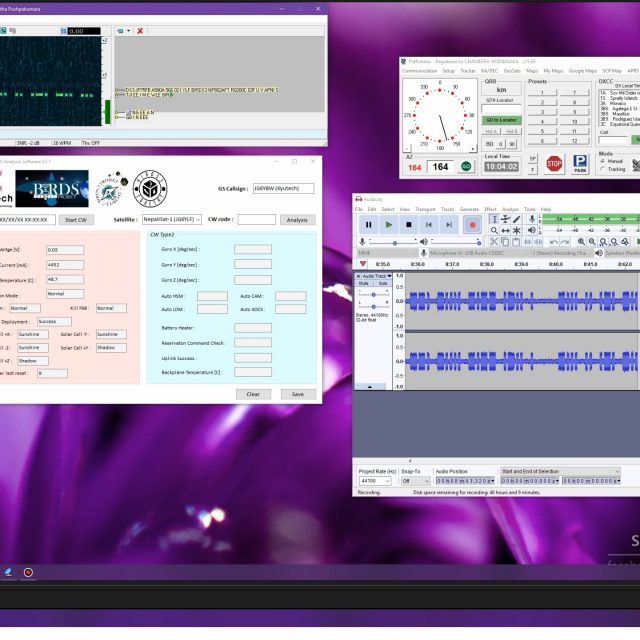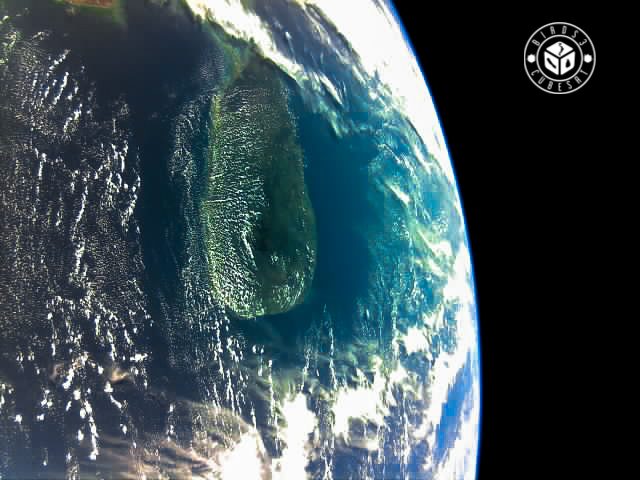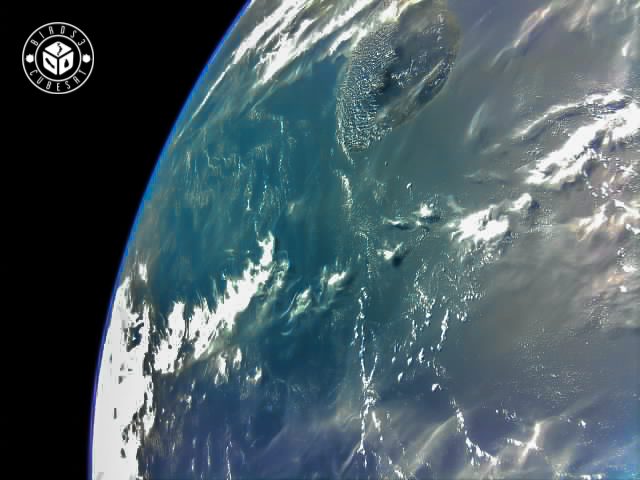BIRDS-3 deployment of Raavana-1
Deploy of the Raavana-1 satellite to the orbit (400km, inclination 51.6 degree of ISS) using Japanese Kibo experiment module on 17th June 2019 at 15.45 Sri Lanka Time
Estrategias efectivas para ganar en Codere
¿Quieres descubrir las estrategias efectivas para ganar en Codere? Si eres un apasionado de los juegos de azar y estás buscando maximizar tus posibilidades de éxito, ¡has llegado al lugar indicado! En este artículo, te revelaremos las claves y tácticas que te ayudarán a aumentar tus ganancias en uno de los casinos más populares y reconocidos. Prepárate para sumergirte en el fascinante mundo de Codere y descubrir cómo puedes convertirte en un jugador ganador.
Desde consejos para administrar tu dinero hasta técnicas para elegir los juegos más rentables, abordaremos todos los aspectos necesarios para que puedas desarrollar una estrategia sólida y efectiva. Además, te daremos recomendaciones sobre cómo aprovechar al máximo las promociones y bonificaciones que ofrece Codere para multiplicar tus ganancias. ¿Estás listo para aprender los secretos de los jugadores exitosos? ¡No te pierdas este emocionante viaje en busca de la victoria en Codere!
Conoce las reglas del juego: Un primer paso para ganar en Codere es comprender a fondo las reglas y mecánicas del juego en el que estás participando.
Si estás buscando estrategias efectivas para ganar en Codere, estás en el lugar correcto. Aquí te presentamos algunas tácticas que te ayudarán a mejorar tus posibilidades de éxito en este famoso sitio de apuestas y juegos de azar.
En primer lugar, es importante establecer un presupuesto y ceñirse a él. Antes de comenzar a jugar, determina cuánto estás dispuesto a gastar y no te excedas de esa cantidad. Esto te permitirá controlar tus gastos y evitar caer en la tentación de apostar más de lo que puedes permitirte perder.
Otra estrategia efectiva es investigar y conocer bien los juegos en los que vas a participar. Aprende las reglas, las probabilidades y las estrategias recomendadas para cada juego. Esto te dará una ventaja sobre otros jugadores y te permitirá tomar decisiones más informadas al momento de apostar. Además, aprovecha las promociones y bonificaciones que ofrece Codere, ya que estas pueden aumentar tus posibilidades de ganar sin gastar más dinero.
Existen varias estrategias efectivas que puedes utilizar para aumentar tus posibilidades de ganar en Codere. En primer lugar, es importante familiarizarte con las reglas y funciones del juego en el que deseas participar. Cada juego tiene sus propias características y entenderlas te dará una ventaja competitiva. Además, es recomendable establecer un presupuesto y ceñirse a él. Administrar de manera responsable tus fondos te permitirá disfrutar del juego sin poner en riesgo tus finanzas personales. Por último, te sugerimos aprovechar las promociones y bonificaciones que Codere ofrece regularmente. Estas promociones pueden darte la oportunidad de obtener beneficios adicionales para jugar en https://playcodere.com/.
Por otro lado, es fundamental practicar y familiarizarse con los juegos antes de invertir dinero real. Muchas plataformas de juegos en línea, como Codere, ofrecen la opción de jugar en modo demo o con dinero ficticio. Aprovecha esta opción para conocer las reglas, las estrategias y las características especiales de cada juego. Además, es recomendable diversificar tus apuestas. No te limites a un solo tipo de juego o apuesta, sino que explora diferentes opciones para aumentar tus probabilidades de ganar. Recuerda también aprovechar los bonos y promociones especiales que Codere ofrece a sus jugadores. Estas ofertas pueden proporcionarte beneficios adicionales y aumentar tus posibilidades de ganar en https://playcodere.com/.
Gestiona adecuadamente tu bankroll: Aprende a administrar tu dinero de manera inteligente y establece límites claros para tus apuestas, evitando así poner en riesgo tu presupuesto.
Si estás buscando estrategias efectivas para ganar en Codere, has llegado al lugar correcto. Aquí te presentamos algunas tácticas que puedes implementar para aumentar tus posibilidades de éxito en esta plataforma de apuestas y juegos de azar.
En primer lugar, es fundamental establecer un presupuesto claro y realista para tus apuestas. Esto te ayudará a controlar tus gastos y evitar pérdidas significativas. Además, es importante investigar y familiarizarte con los diferentes juegos disponibles en Codere. Conocer las reglas, probabilidades y estrategias de cada juego te permitirá tomar decisiones más informadas y aumentar tus probabilidades de ganar.
Ganar en Codere requiere de estrategias efectivas que te permitan maximizar tus posibilidades de éxito. Una de las estrategias más importantes es conocer a fondo el juego en el que vas a participar. Ya sea que juegues en las máquinas tragamonedas, en la ruleta o en el póker, es fundamental entender las reglas, las probabilidades y las posibles estrategias de juego. Esto te dará una ventaja a la hora de tomar decisiones y te permitirá tomar mejores decisiones para aumentar tus ganancias.
Otra estrategia efectiva para ganar en Codere es establecer un límite de dinero que estés dispuesto a apostar y no excederlo. Es importante ser disciplinado y no dejarse llevar por la emoción del juego. Establece un presupuesto y respétalo, de esta manera evitarás caer en la tentación de gastar más dinero del que puedes permitirte perder. Además, es recomendable no perseguir las pérdidas. Si has tenido una mala racha, es mejor retirarse y volver a intentarlo en otro momento.
Por último, una estrategia efectiva para ganar en Codere es aprovechar las promociones y bonificaciones que ofrecen. Muchas veces, los casinos online y físicos tienen ofertas especiales para sus jugadores, como bonos de bienvenida, giros gratis o descuentos en las apuestas. Estas promociones pueden aumentar tus posibilidades de ganar y te permiten jugar más sin gastar tanto dinero. Asegúrate de estar al tanto de las promociones vigentes y aprovecharlas al máximo.
Aprovecha las promociones y bonificaciones: Codere ofrece diversas promociones y bonificaciones que pueden maximizar tus ganancias. Aprende a identificar y aprovechar estas oportunidades para obtener ventajas adicionales.
Codere es una reconocida plataforma de apuestas en línea que ofrece a sus usuarios la oportunidad de ganar grandes premios. Si estás buscando estrategias efectivas para aumentar tus posibilidades de ganar en Codere, estás en el lugar correcto. Aquí te presentamos algunas estrategias que te ayudarán a maximizar tus ganancias.
En primer lugar, es fundamental entender las reglas y funcionamiento de los juegos en los que estás interesado. Dedica tiempo a investigar y familiarizarte con las diferentes opciones disponibles en Codere. Conocer las probabilidades de cada juego te permitirá tomar decisiones más informadas y aumentar tus posibilidades de éxito.
Otra estrategia efectiva es establecer un presupuesto y ceñirse a él. Antes de comenzar a jugar, decide cuánto estás dispuesto a gastar y no te excedas de esa cantidad. Además, es recomendable dividir tu presupuesto en sesiones de juego más pequeñas. De esta manera, podrás controlar mejor tus gastos y evitar caer en la tentación de seguir jugando cuando las cosas no van bien.
Si estás buscando estrategias efectivas para ganar en Codere, estás en el lugar correcto. Codere es una plataforma de apuestas deportivas y juegos de casino en línea que ofrece una amplia gama de opciones para los jugadores. Para aumentar tus posibilidades de ganar, es importante tener en cuenta algunas estrategias clave.
En primer lugar, es fundamental establecer un presupuesto y ceñirse a él. Esto te ayudará a evitar caer en la tentación de gastar más de lo que puedes permitirte perder. Además, es importante investigar y familiarizarte con los juegos en los que deseas participar. Conocer las reglas y las probabilidades te dará una ventaja a la hora de tomar decisiones informadas. También es recomendable aprovechar las promociones y bonificaciones que ofrece Codere. Estas pueden brindarte oportunidades adicionales para ganar y maximizar tus ganancias.
Desarrolla una estrategia de juego sólida: Investigar y practicar diferentes estrategias de juego puede aumentar tus posibilidades de éxito. Descubre qué estrategias se adaptan mejor a tu estilo de juego y ponlas en práctica.
Si estás buscando estrategias efectivas para ganar en Codere, estás en el lugar correcto. Codere es una plataforma de apuestas en línea que ofrece una amplia variedad de juegos y opciones para los jugadores. Aquí te presentamos algunas estrategias que te ayudarán a aumentar tus posibilidades de ganar en Codere.
1. Conoce las reglas del juego: Antes de comenzar a apostar, es importante que entiendas las reglas del juego en el que estás interesado. Cada juego tiene sus propias reglas y estrategias específicas, por lo que es fundamental que las conozcas para tomar decisiones informadas durante el juego.
2. Establece un presupuesto: Antes de comenzar a jugar, establece un presupuesto claro y realista. Esto te ayudará a controlar tus gastos y evitar apostar más de lo que puedes permitirte perder. Recuerda que el juego debe ser divertido y emocionante, y no una fuente de estrés financiero.
3. Aprovecha las promociones y bonificaciones: Codere ofrece regularmente promociones y bonificaciones a sus jugadores. Asegúrate de aprovechar estas ofertas para maximizar tus ganancias. Estas promociones pueden incluir bonos de bienvenida, bonificaciones por depósito y otras promociones especiales. Mantente atento a las últimas ofertas para no perderte ninguna oportunidad de aumentar tus ganancias en Codere.
Para ganar en Codere, es importante implementar estrategias efectivas que maximicen nuestras posibilidades de éxito. En primer lugar, es fundamental estudiar y comprender las reglas del juego en el que estamos interesados. Ya sea apuestas deportivas, juegos de casino o loterías, conocer las normas y peculiaridades de cada modalidad nos permitirá tomar decisiones más informadas y aumentar nuestras probabilidades de ganar.
Otra estrategia efectiva es establecer un presupuesto y ser disciplinado en su cumplimiento. Es fácil dejarse llevar por la emoción del juego y gastar más de lo planeado, pero es importante tener en cuenta que el juego debe ser una forma de entretenimiento y no una fuente de problemas financieros. Establecer límites claros en cuanto a la cantidad de dinero que estamos dispuestos a invertir nos ayudará a evitar pérdidas excesivas y a mantener el control sobre nuestras finanzas.
Por último, es recomendable aprovechar las promociones y bonificaciones que ofrece Codere. La plataforma suele ofrecer promociones especiales, bonos de bienvenida y otras ventajas que pueden aumentar nuestras posibilidades de ganar sin necesidad de invertir más dinero. Estar atentos a estas oportunidades y utilizarlas estratégicamente puede marcar la diferencia a la hora de obtener ganancias en Codere.
Mantén la disciplina y el control emocional: El juego puede ser emocionante y a veces desafiante. Es fundamental mantener la calma, evitar tomar decisiones impulsivas y mantener una actitud disciplinada en todo momento.
Si estás buscando estrategias efectivas para ganar en Codere, estás en el lugar correcto. A continuación, te presentamos algunas tácticas que puedes utilizar para aumentar tus posibilidades de éxito en esta plataforma de apuestas deportivas y juegos de casino.
En primer lugar, es fundamental establecer un presupuesto y ceñirse a él. Antes de comenzar a jugar, determina cuánto estás dispuesto a gastar y no te excedas de esa cantidad. Además, es importante diversificar tus apuestas y no apostar todo tu dinero en un solo evento o juego. Distribuir tus apuestas te dará más oportunidades de ganar.
En conclusión, implementar estrategias efectivas es clave para aumentar las posibilidades de ganar en Codere. Desde establecer un presupuesto adecuado hasta aprovechar las promociones y bonificaciones, cada jugador debe buscar maximizar sus oportunidades. Además, es fundamental tener un buen conocimiento del juego y practicar regularmente para perfeccionar las habilidades. No olvides que el juego responsable es fundamental para disfrutar de la experiencia sin excederse. Con estas estrategias en mente, estarás en el camino correcto para alcanzar el éxito en Codere.
Raavana-1 was deployed to the orbit..
The first satellite (a Nano satellite) developed by Sri Lankan engineers through a joint multinational (Sri Lanka, Nepal and Japan) project (Birds-3) which was carried to the International Space Station (ISS) on 19th April 2019 through the Cygnus space craft, was successfully deployed to the 400km orbit (the orbit at the inclination of 51.6 degree to equatorial plane where the ISS is orbiting) on 17th June 2019 at 15.45 Sri Lanka time together with the other two.
A public event was organized on (17th June 2019 evening) that day at ACCIMT main auditorium in the presence of officials from ministries, institutes, media and general public. ACCIMT Nano satellite project details including history, objectives, international programs, current progress and future plans were presented by the DDG (T) and the live video from the JAXA about the satellite deployments were screened. A representative from the Embassy of Sri Lanka in Japan participated for the JAXA event also.
The first CW (Continuous Wave) beacon identifications of all three satellites were received by the ACCIMT ground station during a pass through Sri Lanka at about 17.55 on the same day. Thereafter several ground stations (in the ‘Birds’ network) are receiving signals form the satellite and commands from Japan are acknowledged by the Raavana-1. Once the satellite is allowed to be commanding from Sri Lanka, it is expected to receive data from the payloads which are to be used for research purposes and system designs tested for space heritage for the next satellite development project.
The 1st ever cube satellite of Sri Lanka completed and deployed by Arthur C. Clarke Institute for Modern Technologies in agreement with Kyushu Institute of Technologies Japan is successful after receiving data from all the sub system status and all payload systems data including the camera images to the ground station at ACCIMT for the past 6 weeks since it’s operation from 17th June 2019.
Main data downloads from the satellite includes following,
- Research data on satellite orientation in the orbit using Gyroscope
- Research data on orbital (400km) magnetics using the Magnetometer
- Data on camera images (low resolution and high resolution) using ground command controls instantaneous or timer (images from anywhere in the Globe depending on the orbit time).
The satellite data downloading and command control currently operated from ACCIMT ground station and Japan (Kyutech) ground station using their automated facilities.
Research data will be published through the ACCIMT website for anyone interested in using them free of charge. Also anyone interested in getting the experience of satellite data downloading and commanding (when satellite is passing our region) can make a visit to ACCIMT after getting permission from Director General and contacting the ground station manager.

